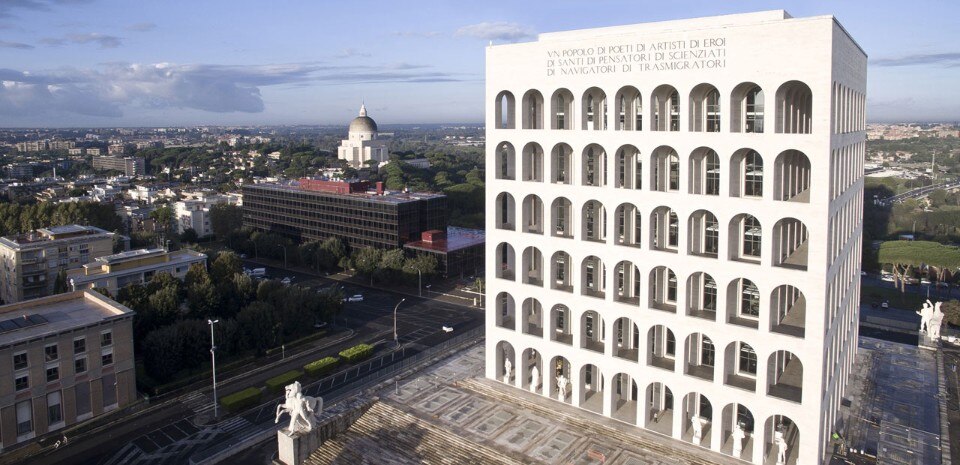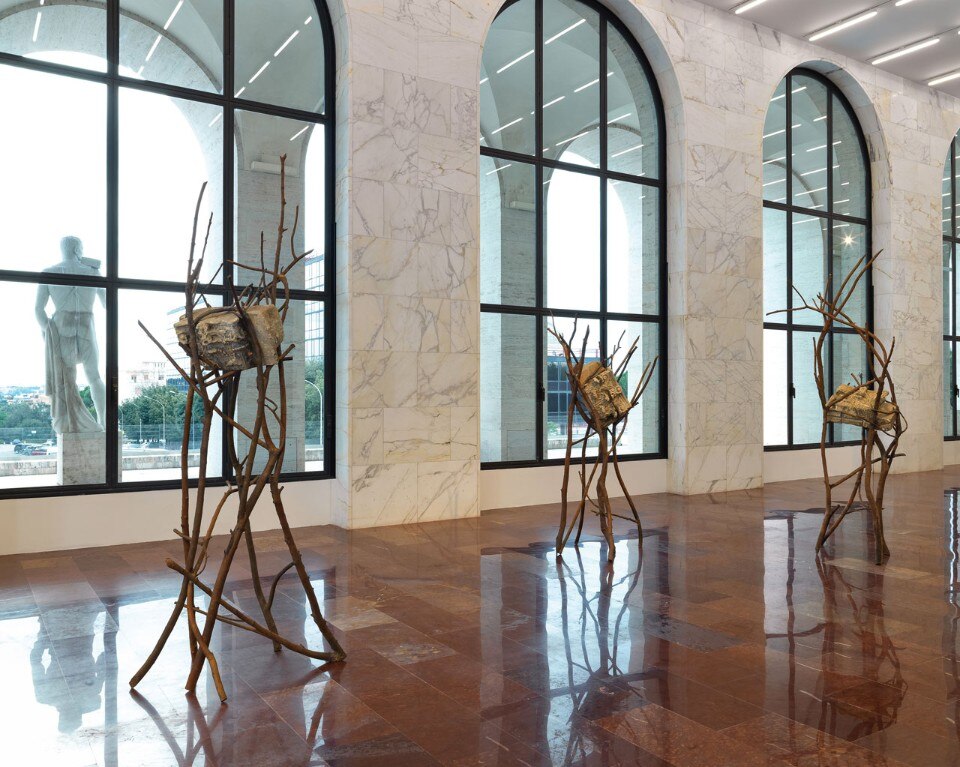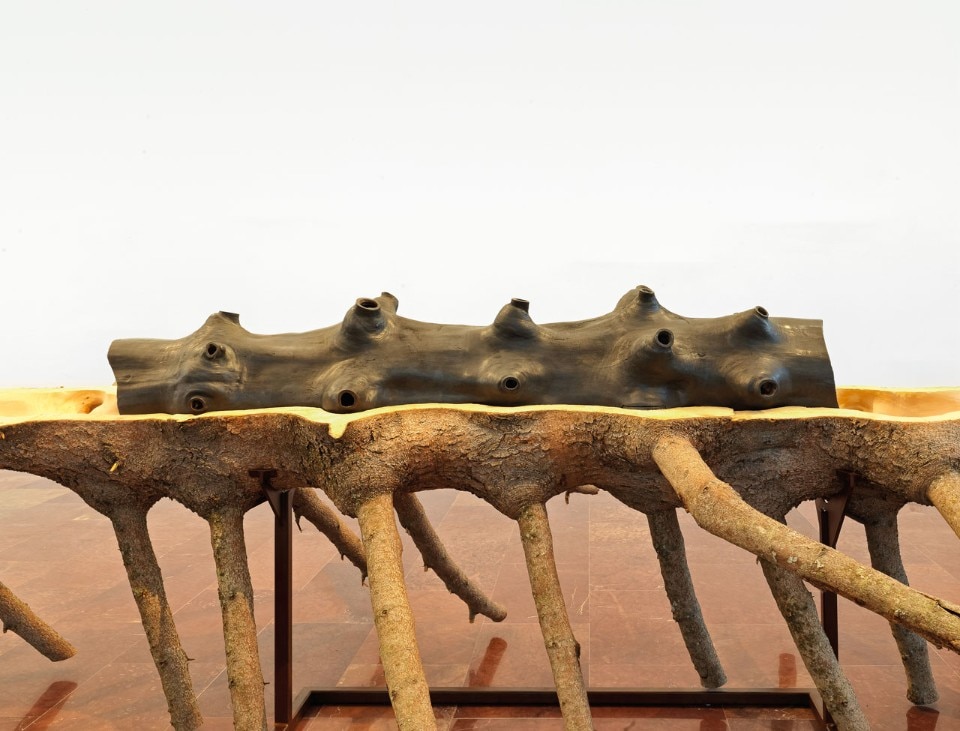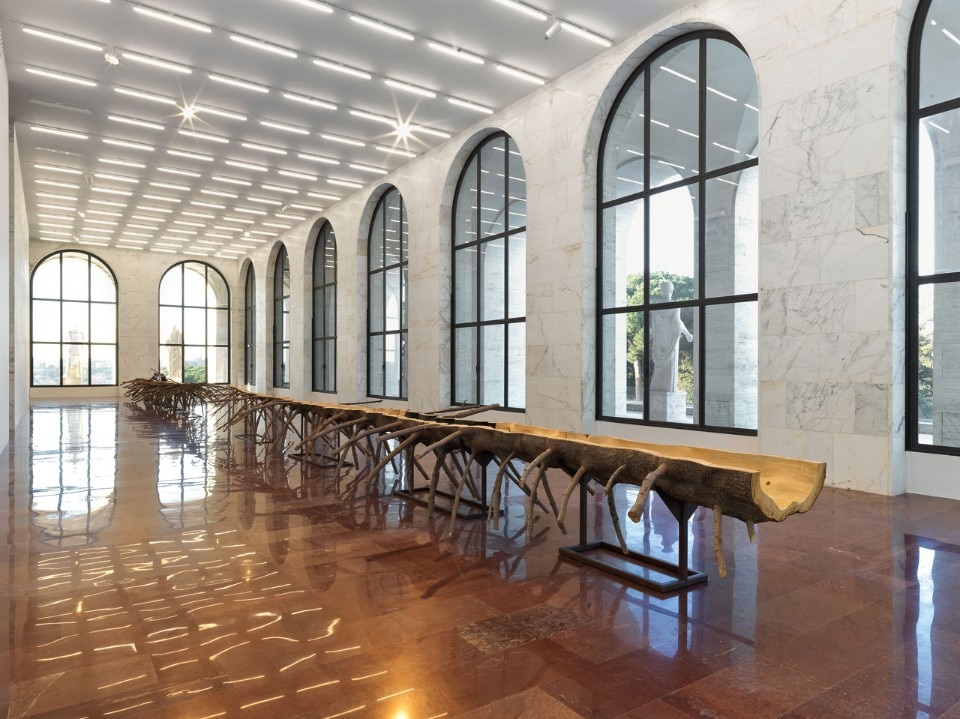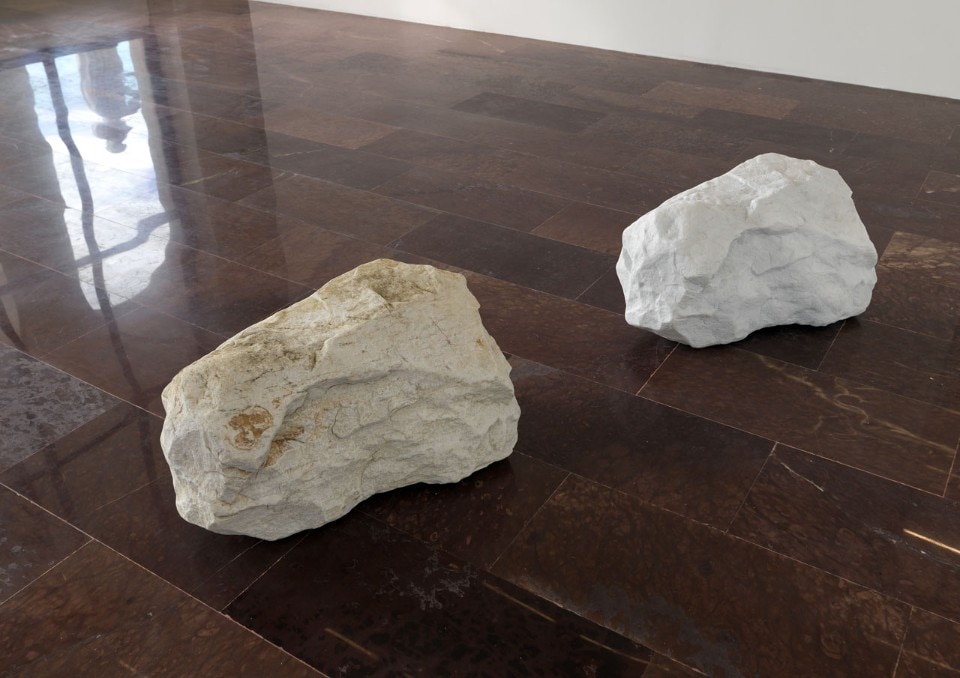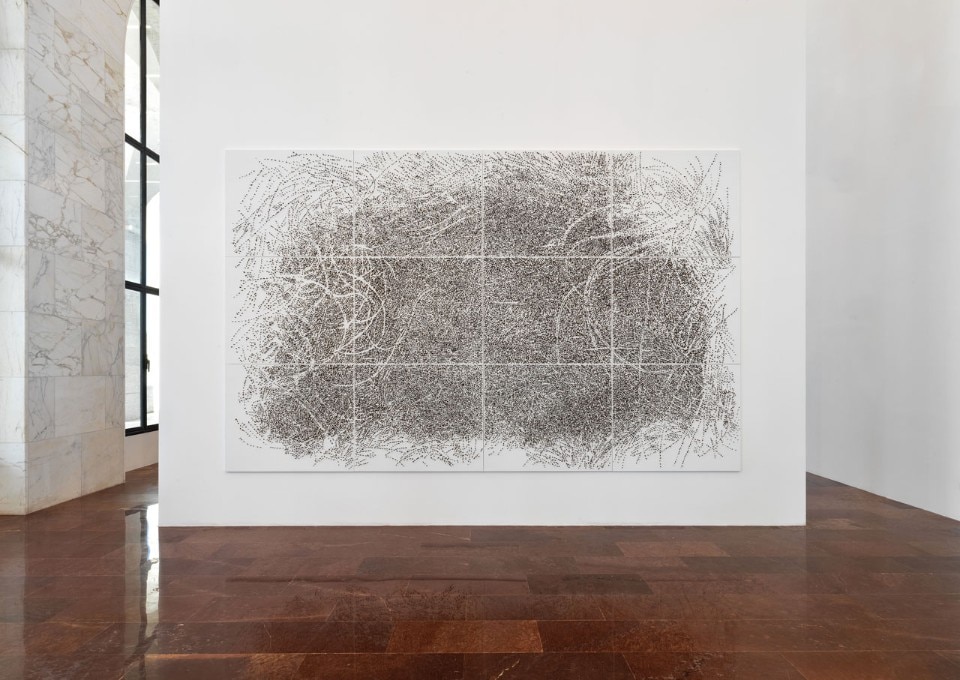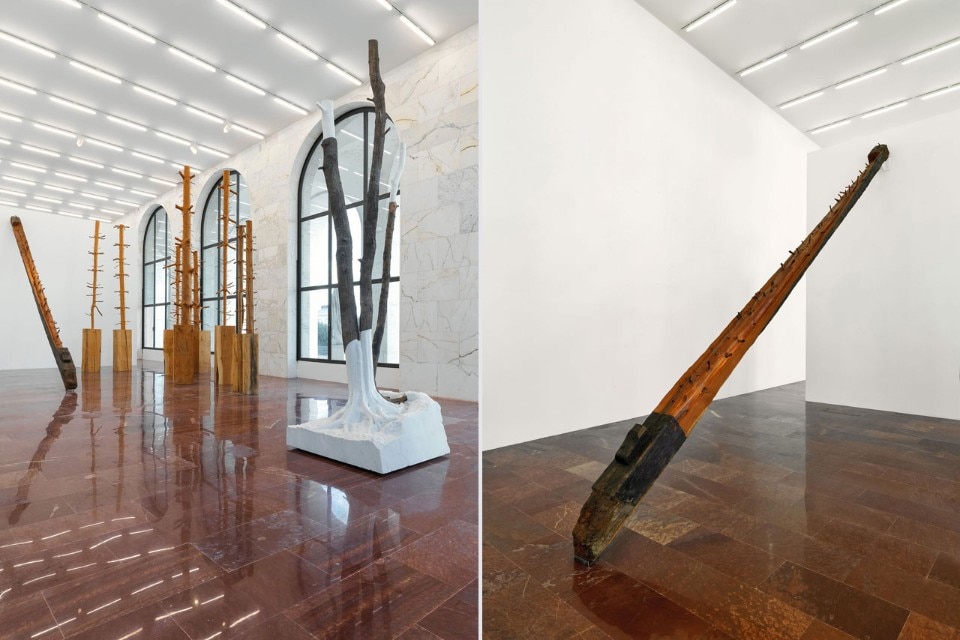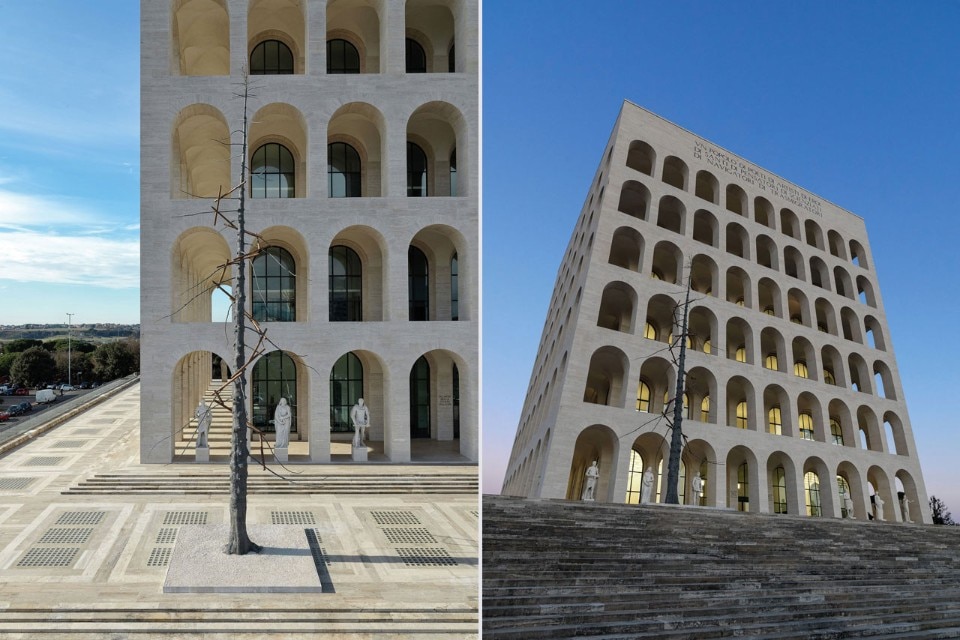
“Trees appear as solid beings, but if we observe them through time, in their growth they become a fluid, malleable matter. A tree is a being that memorizes its own shape and this shape is necessary to its life. Therefore, it is a perfect sculptural structure, because it carries the necessity of existence,” states Giuseppe Penone.
Another piece in the exhibition, Ripetere il bosco (Repeating the Forest, 1969–2016), one of Penone’s most renowned works, presents a number of trunks excavated from wooden blocks and arranged to resemble a small forest. Like a fairytale landscape, Ripetere il bosco recalls profound and ancient associations between magic and wilderness while also describing an increasingly tamed and artificial nature – a contrast that reveals Penone’s environmental concerns and anxieties that are more relevant now than ever.
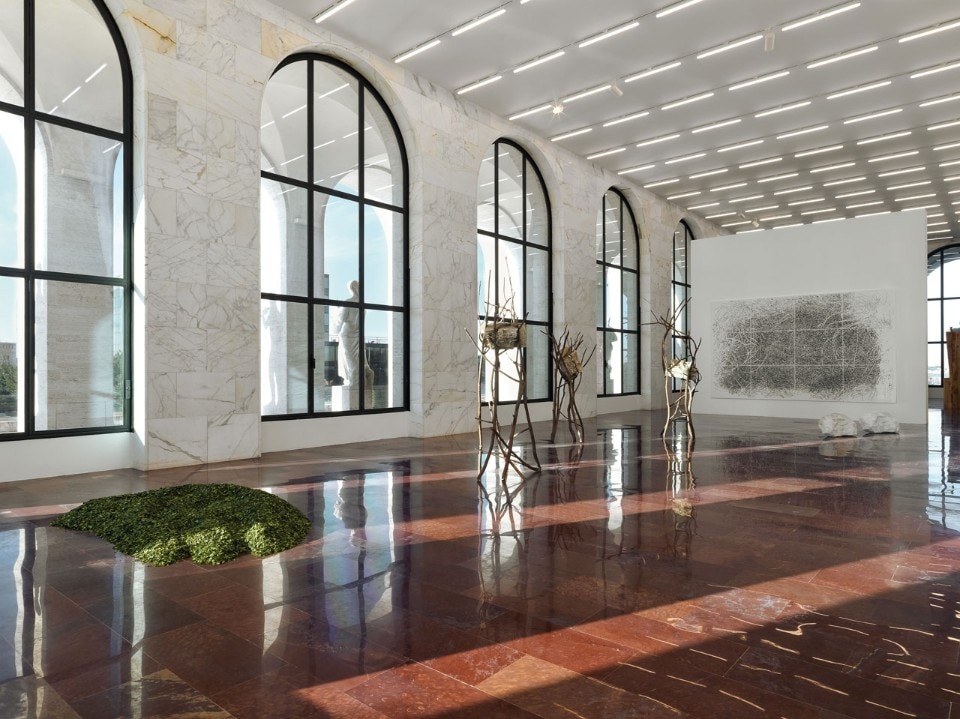
The series Foglie di pietra (Leaves of Stone, 2013) – which will be shown in Italy for the first time – combines natural elements and marble blocks carved into capitals and columns, evoking ancient ruins and fragments of history regained by nature. The Foglie di pietra sculptures appear even more alluring in the setting of the Palazzo della Civiltà Italiana in Rome, as the spiraling trees and branches interlace with the weight and wealth of ancient history.
“In these works, archaeology and ruins, history and culture are featured as a kind of “second nature.” It is a deep synthesis between the flowing of natural and human time, where – for the first time in Penone’s work – a sense of longing and a romantic nostalgia for lost civilizations are brought to the surface,” affirms Massimiliano Gioni, curator of the exhibition.
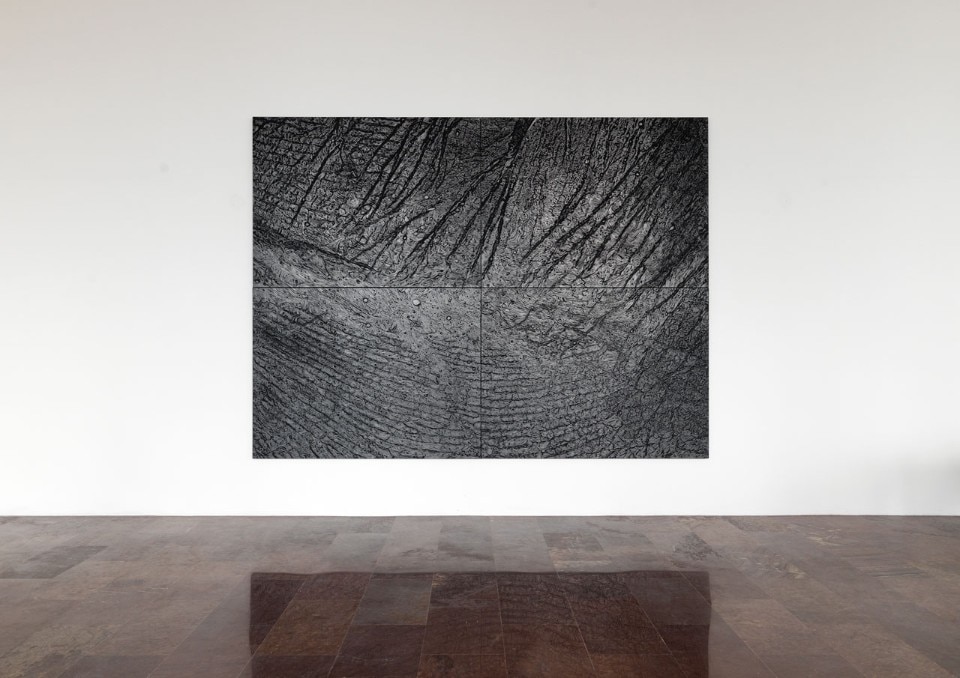
Other works provide a counterpoint to these atmospheres, like the huge Spine d’acacia – Contatto (Acacia Thorns – Contact, 2006), which delineates on canvas the barely visible image of a person’s face drawn with hundreds of thorns. Delicate and aggressive at the same time, Spine d’acacia belongs to a celebrated series of Penone’s works in which the human body is described through traces of its absence, like fingerprints, footprints and impressions of the artist’s breath. In Soffio di foglie (Breath of Leaves, 1979) for instance, an impression of the artist’s body is visible in a stack of myrtle leaves. In Essere fiume (Being a River, 2010), a deceivingly simple sculpture that is philosophically complex, the artist meticulously reproduces the shape of a river-polished stone by carving a marble block. Through this maniacal exercise in simulation, which is also a wonderful allegory of sculpture, Penone carefully replicates the forces of nature, joining in the “cosmic communion” that the artist describes as one of the foundations of his work.
until 16 July 2017
Giuseppe Penone Matrice
Palazzo della Civiltà Italiana
Quadrato della Concordia 3, Rome
Curator: Massimiliano Gioni


